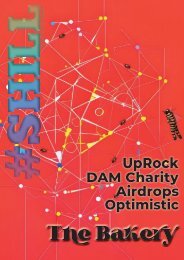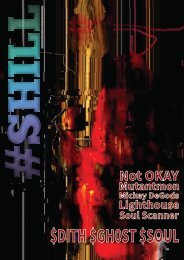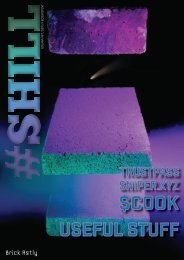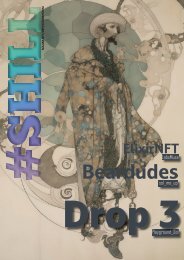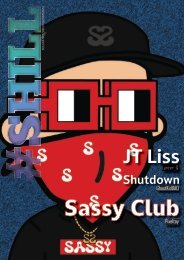You also want an ePaper? Increase the reach of your titles
YUMPU automatically turns print PDFs into web optimized ePapers that Google loves.
WITH SENTIENTSHAPES<br />
Hello Readers, now that you’ve had a few light weeks of practicing here. Let’s<br />
once again dive into the deep waters of poetic structure and the constraints that<br />
help us become better writers and artists each day. Now if you remember the five<br />
poetic structures, and if you can’t recall here they are: meter, rhyme, scheme,<br />
verse, and stanza. These five elements are a generalization of the vast number of<br />
different types of poetic structure that you can use as an outline for your writing.<br />
Today we will be looking at a structure that has 2 uses, as a stanza and a use as<br />
its own poem as well. The Tercet. A Tercet is any three lines of poetry, whether as<br />
a 3-lined stanza or a stand alone poem. The Tercet can rhyme (or not) and can<br />
have a particular meter (or not). A great example we all know commonly as the<br />
Haiku is a Tercet. Oh! Now in your mind you’re thinking a Tercet is easy? Three<br />
little lines, just scribbled on a page. Well, let’s put it this way, an easy Tercet is like<br />
a “bad” Tercet, not thought out, syllables not even noticed, no meter, no subtle<br />
foreshadowing or social commentary. Remember, even if you can only use ten<br />
words in an entire poem–those ten words must convey the precise intention of<br />
the author. If you choose your words all willy-nilly your poem will lose its depth<br />
and power. When we use conciseness we must use preciseness as well…using<br />
little words doesn’t mean applying lesser meaning. Using more words does not<br />
portray more meaning.<br />
1/4







